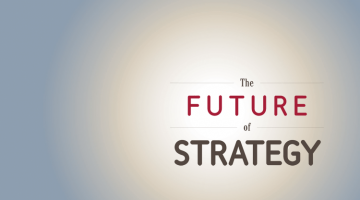When talent retention is not the answer
When the best talent today create careers by pursuing a progressive sequence of professional challenges across multiple companies to provide them – and the companies they work for – with the right skills and competencies for today’s networked and dynamic world the notion of Talent Retention feels outdated. In fact, it represents a risk of denying your organization the contributions of some of the best and brightest out there. The new name of the game is talent attraction at all levels in the organization.
This is not the only paradigm shift in the bigger Human Capital equation. We are also facing a much more dynamic business environment forcing us towards shorter, more specific, and deeper resourcing cycles. At the same time we are facing a shift towards the “FaceBook” model in which the majority of people work to create the machine on which the customers (you and me) take care of their own transactions – just like people making their own travel arrangements, sorting out computer problems, manage their own financial affairs online, design their own kitchens with software provided by manufacturers, etcetera.
The Human Capital bar is being raised on all fronts. We have to move from a state of optimized stability to ongoing channeling of business dynamics in our approach to Human Capital contributions to business success. This plays out at three levels:
Organization level: we are gradually moving away from structures in terms of organizational diagrams, departments, functions, job descriptions, career paths and the like towards a focus on making the right decisions and managing the appropriate trade-offs, having the necessary governance in place, having the ability to effectively engage the organization, shifting from management by instruction to management by principle, and a shift from managing productivity to channeling business dynamics.
Talent Level: Several fundamental shifts will play out at the talent level. An important one is the shift from lifetime careers to multi-company, assignment based careers. This will go hand in hand with substantially higher numbers of employees entering and leaving companies at all levels as well as contributions from specialized service providers. As a result, companies will be able to take their strategic resourcing flexibility to the next level.
Contribution level: People will less and less contribute to the success of organizations within the limitations of job or function profiles, or their particular position in the organization. Fuelled by technology, individuals will increasingly be able to make contributions based on their competencies and interests or even work much more as an internal “professional services firm” type of staffing to particular issues and opportunities.
Many organizations have reached the boundaries of what can be achieved within the confines of traditional organizational structures and ways of working. Many are actively exploring new configurations for becoming more in tune with today’s dynamic business environment. There is still a lot of work to do however to fundamentally change the way in which our Human Capital can optimally contribute to our success.










